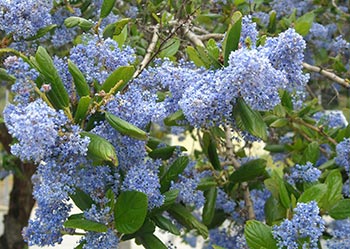There are special plants that are not legumes that also fix nitrogen in nodules on their roots. Frankia is a genus of soil actinomycetes (a specific group of bacterium that resemble fungi) in the family Frankiaceae that fix nitrogen. Rhizobia are responsible for the nitrogen-fixation of legumes. Frankia are unusual in that they are capable of infecting a wider range of host plants than other nitrogen-fixing rhizobial bacteria.
Examples of temperate-zone plants that have non-leguminous nitrogen-fixing Frankia bacteria include:
Alder (Alnus spp.)
Bayberry (Myrica pensylvanica)
Sweet gale (Myrica gale)
Sweet fern (Comptonia peregrina)
New Jersy tea (Ceanothus americanus)
California summer lilac (Ceanothus spp.)
Canada buffaloberry (Shepherdia canadensis)
Silver buffaloberry (Shepherdia argentea)
Round-leaf buffaloberry (Shepherdia rotundifolia)
Brittlebrush (Purshia tridentata)
Mountain mahoganies (Cercocarpus spp.)
Australian pine (Casurina spp.) (Note: an invasive exotic.)
Autumn olive (Elaeagnus umbellata) (Note: an invasive exotic.)
Russian olive (Elaeagnus angustifolia) (Note: an invasive exotic.)
Here's a picture of a California lilac (Ceanothus spp.)

In order for other plants to “gather” a significant amount of nitrogen from these plants they must die, be grazed, burned or cut down. I doubt if you have cattle. And it’s unlikely you will cut these perennial shrubs down. Therefore the nitrogen is accumulated slowly by the gradual “shedding” of nodules. That is, some of the nodules naturally die and release their nitrogen to the roots of adjacent plants. This process is slow but constant.
|

